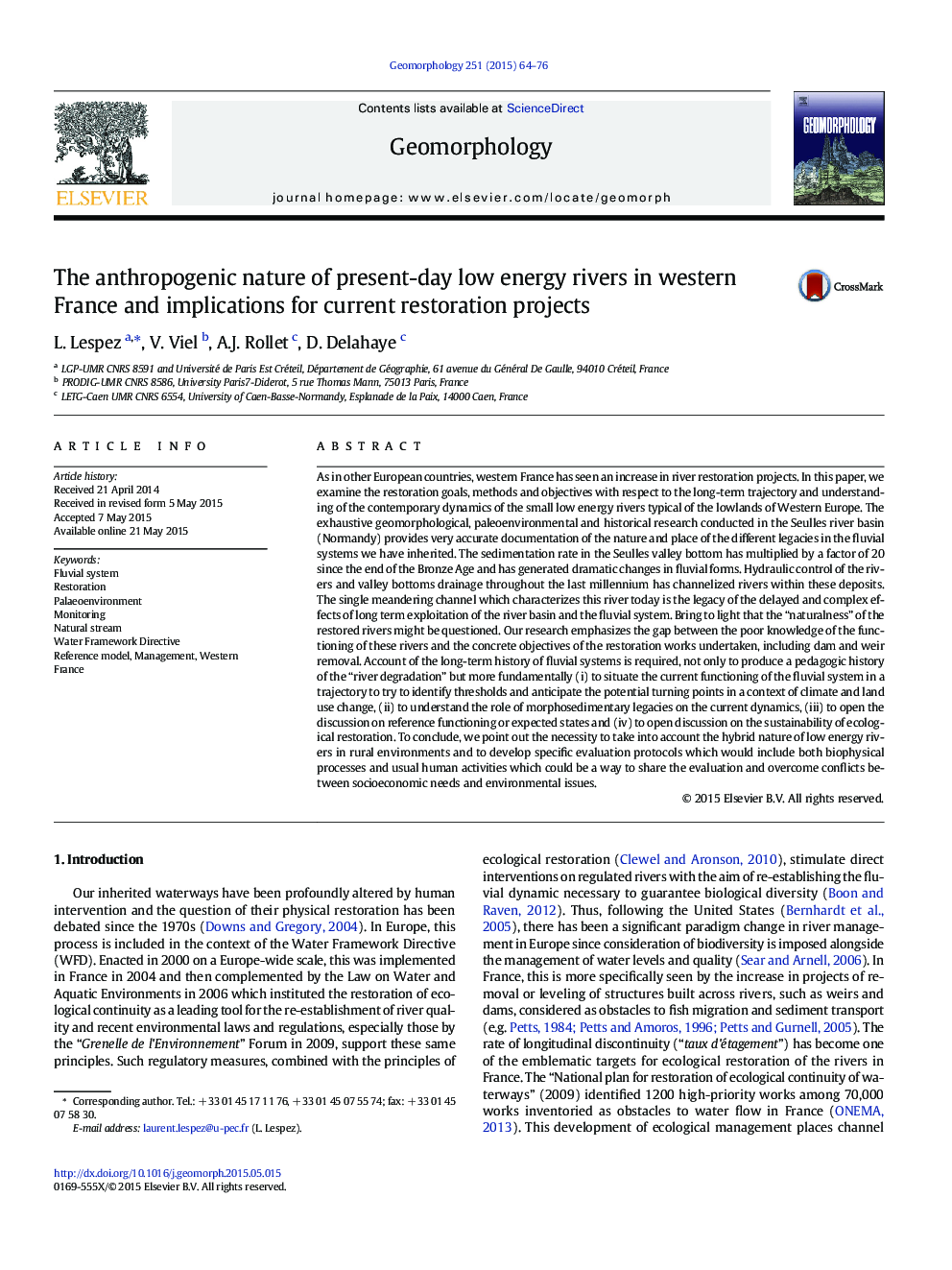| کد مقاله | کد نشریه | سال انتشار | مقاله انگلیسی | نسخه تمام متن |
|---|---|---|---|---|
| 4684143 | 1635398 | 2015 | 13 صفحه PDF | دانلود رایگان |
• We analyze nature and place of the different legacies in the fluvial system.
• Sedimentation rate and hydraulic controls result in dramatic changes.
• Low energy rivers subject of restoration projects are insufficiently known.
• The study of the legacy and current functioning needs to be integrated.
• Specific analyses integrating biophysical processes and human activities are needed.
As in other European countries, western France has seen an increase in river restoration projects. In this paper, we examine the restoration goals, methods and objectives with respect to the long-term trajectory and understanding of the contemporary dynamics of the small low energy rivers typical of the lowlands of Western Europe. The exhaustive geomorphological, paleoenvironmental and historical research conducted in the Seulles river basin (Normandy) provides very accurate documentation of the nature and place of the different legacies in the fluvial systems we have inherited. The sedimentation rate in the Seulles valley bottom has multiplied by a factor of 20 since the end of the Bronze Age and has generated dramatic changes in fluvial forms. Hydraulic control of the rivers and valley bottoms drainage throughout the last millennium has channelized rivers within these deposits. The single meandering channel which characterizes this river today is the legacy of the delayed and complex effects of long term exploitation of the river basin and the fluvial system. Bring to light that the “naturalness” of the restored rivers might be questioned. Our research emphasizes the gap between the poor knowledge of the functioning of these rivers and the concrete objectives of the restoration works undertaken, including dam and weir removal. Account of the long-term history of fluvial systems is required, not only to produce a pedagogic history of the “river degradation” but more fundamentally (i) to situate the current functioning of the fluvial system in a trajectory to try to identify thresholds and anticipate the potential turning points in a context of climate and land use change, (ii) to understand the role of morphosedimentary legacies on the current dynamics, (iii) to open the discussion on reference functioning or expected states and (iv) to open discussion on the sustainability of ecological restoration. To conclude, we point out the necessity to take into account the hybrid nature of low energy rivers in rural environments and to develop specific evaluation protocols which would include both biophysical processes and usual human activities which could be a way to share the evaluation and overcome conflicts between socioeconomic needs and environmental issues.
Figure optionsDownload as PowerPoint slide
Journal: Geomorphology - Volume 251, 15 December 2015, Pages 64–76
